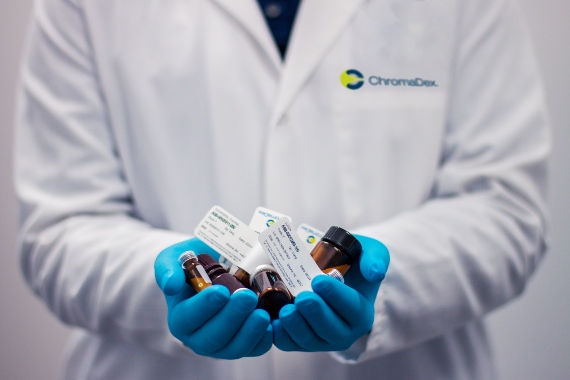Around 200 billion US dollars are invested every year in medical research worldwide (1). The result of this collective effort has been astonishing: In just 100 years, life expectancy rocketed from approximately 45 to 72 years (2). However, there is still a lot of work to be done, since the figure for mortality caused by non-communicable diseases stands at almost 41 million people per year (3).

Description of the current R&D model
Despite substantial investment in R&D and innovation, improvements in global health seem to have reached a plateau. The current model of medical research is struggling due to a series of shortcomings that we summarize as follows:
-
A linear approach.
The current medical research framework mirrors a linear, incremental and sequential process, which has been the only paradigm accepted to date (4). In this linear approach, the amount and quality of the results is a direct function of the amount of resources invested in a certain project.
-
Egocentric and self-serving data processing.
Pharmaceutical companies and academic institutions never share the full results of their research with the scientific community unless they decide to publish their research in scientific journals or if there is a business or commercial agreement in place. Typically this takes the form of a licensing contract or, at least, an NDA between the parties.(5). The information is usually stored in closed and sealed compartments within companies or institutions and with limited access to outsiders. These “Chinese walls” not only prevent innovation, they also increase the time and cost of delivering true benefits to patients.
-
A Model based on scarce information and ownership of assets.
Value is understood as the amount of “assets” an entity owns (patents, compounds in the pipeline, etc.), and the relevance of an entity is determined based on these assets. However, scarcity encourages hoarding and monopolization of resources that lead to a suffocation of any innovation strategy (6). The current mind-set drives pharmaceutical and biotech industries to generate innovation and value through the acquisition of assets and new discoveries from other stakeholders, which results from the mega concentrations of companies within the sector (7).

-
A limited learning scenario.
Most companies and institutions work with their own proprietary processes and methodologies. They do not share information with other stakeholders unless there is an agreement that provides economic compensation or the promise of future and potential monetary benefits, for disclosing and sharing it (8). This makes learning and technological evolution dramatically slow and dependent on top-down hierarchy decisions.
-
An expensive and risky system.
In order to bring a new drug to the market, companies typically spend hundreds of millions of US dollars over a period of 10 to 12 years (9). The massive cost of this process (particularly, clinical trials), along with the high attrition rates in drug discovery, adds to the financial risk of drug development.
-
A conservative attitude.
Stakeholders in medical research typically prefer preservation over growth, and familiar contexts over new frontiers (10). In other words, they avoid challenges and strongly invest in what they know. Therefore, companies within the medical sector rarely change their products or services.
The result is an exhausted market with excessive competition due to both a high attrition rate in drug discovery and the erosion of key brands by the ever-growing portfolio of generic drugs. Additionally, a higher number of alternative molecules for different diseases has led to an exponential increase in the improvements required by healthcare regulatory agencies when examining “new drug marketing authorizations”. Finally, local political pressure by health and pension agencies has led to an increased scrutiny on drug margins.
A human/machine collective intelligence for a smarter medical research
A new form of collective intelligence born from the union of human scientists’ skills and computers will deliver colossal analytical capabilities that will dramatically improve the future of human health (11). The AI-scientist partnership will exponentially expand synergies that will clear away the hurdles described in the current (and soon outdated) medical R&D model, opening the door to a new disruptive R&D paradigm that can be described as follows:
-
An exponential R&D approach.
When a process becomes digitized and powered by information flow, its pace of development jumps onto a path of exponential growth, doubling every two years ( Moore’s Law) (12). In this nonlinear system, AI tools outperform traditional regression and statistical tools, leading to an exponential increase in the quality of the results obtained in medical research.

-
Generous and altruistic treatment of the data.
In an information-based environment, access and sharing data is more important than ownership. Participation and exchanges amongst different networks and communities generate exponential growth and value (13). Even patients will have the chance to contribute to medical advancement by voluntarily sharing their anonymized medical records. Patients may stop being spectators and become major players in their own healthcare.
-
Based on a wealth of information and shared assets.
A wealth of information encourages data sharing and facilitates innovation (14). Computer algorithms are capable of processing encoded and anonymized data. Once the data is processed, these systems learn and improve its knowledge. Therefore, all users will benefit from this shared, enhanced knowledge, extracting their own value from it.
-
A global and continuous learning process.
One of the main advantages of AI tools is their ability to progressively learn with and from the data without being explicitly programmed for this.
-
Lower research costs.
The costs associated with medical research will be reduced exponentially, tending to zero, whereas the output will dramatically increase, as all wasteful processes and expenditure on purposes other than the creation of value are eliminated (15).
-
A disruptive attitude.
The new paradigm promotes a culture of continuous in silico experimentation, which reduces research costs and increases innovation, resulting in a wealth of information and a subsequent cost reduction, therefore generating a positive feedback loop. In this system, the stakeholders who benefit the most are those who experience more and learn faster.

In this disruptive model, insights and decisions will be data-driven and will be combined with the work of healthcare professionals, which will improve patient care standards through a truly personalized and holistic approach (16). Patients and citizens become very important players in the advancement of healthcare, and health policies favor prevention over treatment, thanks to the new wealth of information. This paradigm should also encourage and promote the democratization of diagnosis, with health concerns being identified much earlier and therefore, treated at much lower costs with more effective, targeted medicines. This will not only improve clinical outcomes, but it will also reduce the overall financial burden on healthcare systems. The benefits could be greater in peripheral areas or in developing countries without access to medium/high complexity care centers, as primary care doctors will be able to establish difficult diagnoses earlier and determine which patients need to be referred to other centers to receive specialized treatment. In summary, this colossal common effort based on a new collective intelligence will exponentially improve the quality of medical research, resulting in a radical shift from the current healthcare model.
References
1- https://www.statista.com/statistics/309466/global-r-and-d-expenditure-for-pharmaceuticals/
2- https://www.who.int/gho/mortality_burden_disease/life_tables/situation_trends/en/
3- https://www.who.int/gho/ncd/mortality_morbidity/en/
4-https://www.efpia.eu/publications/data-center/innovation/research-and-development-process/
5- Wang L, Plump A, Ringel M. Racing to define pharmaceutical R&D external innovation models. Drug Discovery Today 20:361-370, 2015.
6- Gold ER, Kaplan W, Orbinski J, Harland-Logan S, N-Marandi S. Are Patents Impeding Medical Care and Innovation? PLoS Medicine 7:e1000208, 2009.
7-https://www.statnews.com/2019/07/10/pharmaceutical-mergers-stifle-innovation/
8- Birnbaum MJ. Pharma and Academia: What we have here is a failure to communicate. Cell Metab 24:365-367, 2016.
9- Mullard. A new drugs cost US$2.6 billion to develop. Nature Reviews Drug Discovery 13:877, 2014.
10- https://www.bloomberg.com/news/articles/2017-11-30/pharma-s-status-quo-may-be-doomed
12- Ismail S. Exponential organizations. Ed. Diversion Books, New York, NY, USA. 2014.
14- Tormay P. Big Data in pharmaceutical R&D: Creating a sustainable R&D engine. Pharm Med 29:87–92, 2015.
15-https://www.lifescienceintegrates.com/the-disruptive-power-of-pharma-ai/
16- Shah P, Kendall F, Khozin S, Goosen R, Hu J, Laramie J, Ringel M, Schork N. Artificial intelligence and machine learning in clinical development: a translational perspective. NPJ Digit Med 2:69-74, 2019.
Comments on this publication